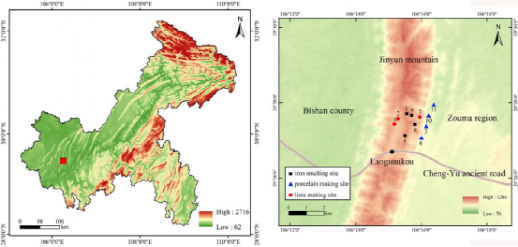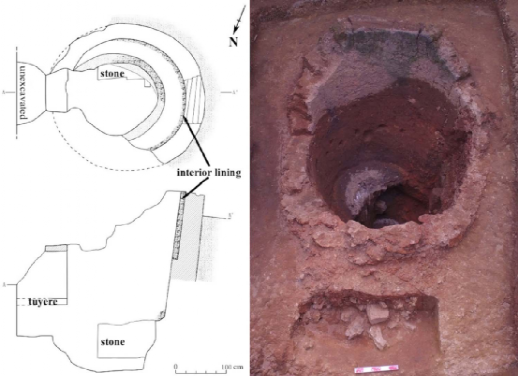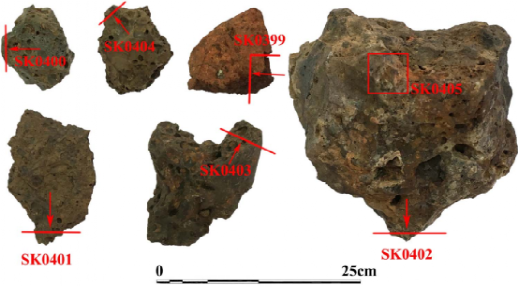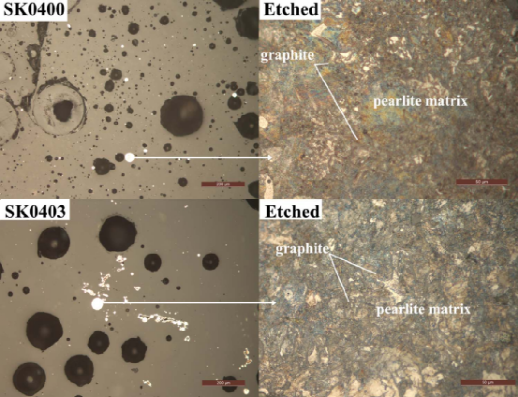The archaeometallurgy team published their latest academic achievement in an international journal: "Iron Industry Production in Western Chongqing during the Late Ming Dynasty: Centered on Metallurgical Remains"
Recently, the archaeometallurgy team of the Center for Archaeological Science, Sichuan University, in collaboration with the Chongqing Institute of Cultural Relics and Archaeology, published their latest research findings online in the international archaeological journal Asian Perspectives: the Journal of Archaeology for Asia and the Pacific, titled Iron Production in Western Chongqing during the Late Ming Dynasty: Centered on Metallurgical Remains. Associate Professor Li Yuniu from the Center for Archaeological Science, Sichuan University is the first author of this article, master's student Qiu Tian is the third author, and doctoral student Huang Wan is the corresponding author. Associate Researcher Sun Zhigang and Researcher Bai Jiujiang from the Chongqing Institute of Cultural Relics and Archaeology are co-authors of this article.
This study systematically analyzed four Ming and Qing dynasty iron smelting sites in the Zouma area of western Chongqing, including Luduizi, and the metallurgical relics unearthed, combined with relevant archaeological discoveries and documentary records, and restored and reconstructed the iron smelting technology in this area. The site is currently the earliest and best-preserved pig iron smelting remains discovered in western Chongqing. From the perspective of handicraft archaeology, combined with scientific and technological analysis methods and historical documents, this study reconstructed the iron smelting technology system in the Zouma area during the Ming and Qing dynasties, filling the gap in the study of iron smelting technology in western Chongqing during the Ming and Qing dynasties.


The Chengyu Ancient Road is an important land route between Chengdu and Chongqing in ancient times. Its formation dates back to at least the Tang and Song dynasties, and it developed into an important post road between Chengdu and Chongqing during the Ming and Qing dynasties. The Zouma area is located in the west of Zouma Town, Jiulongpo District, Chongqing, and is a necessary route between Laifeng Post in Bishan County and Baishi Post in Ba County on the Chengyu Ancient Road. The discovery of handicraft site clusters in this area provides new clues for exploring regional economic development.
A total of 4 iron smelting sites from the Ming and Qing dynasties were discovered in the Zouma area. Combined with the age characteristics of the unearthed relics and carbon-14 dating data, the metallurgical activities of the Luduizi and Tieshazitu sites can be traced back to the 16th to 17th centuries, and the metallurgical activities of the Gaoluchang and Nianmigou sites date back to the 19th century. Through the metallographic and compositional analysis of the unearthed slag, it is clear that Luduizi and Tieshazitu both used pig iron smelting technology, and used local siderite and dolomite in the smelting process. No evidence of forging or casting was found at the site, so it is speculated that the pig iron produced at the site may have been transported to other locations for further processing.
Documentary records show that the iron industry during the Ming and Qing dynasties saw a shift from government operation to private operation. The four iron smelting sites in the Zouma area in this study are not found in official records, and their smelting technology is not developed. Therefore, it is speculated that these iron smelting sites are likely to be privately-owned iron industry workshops.


